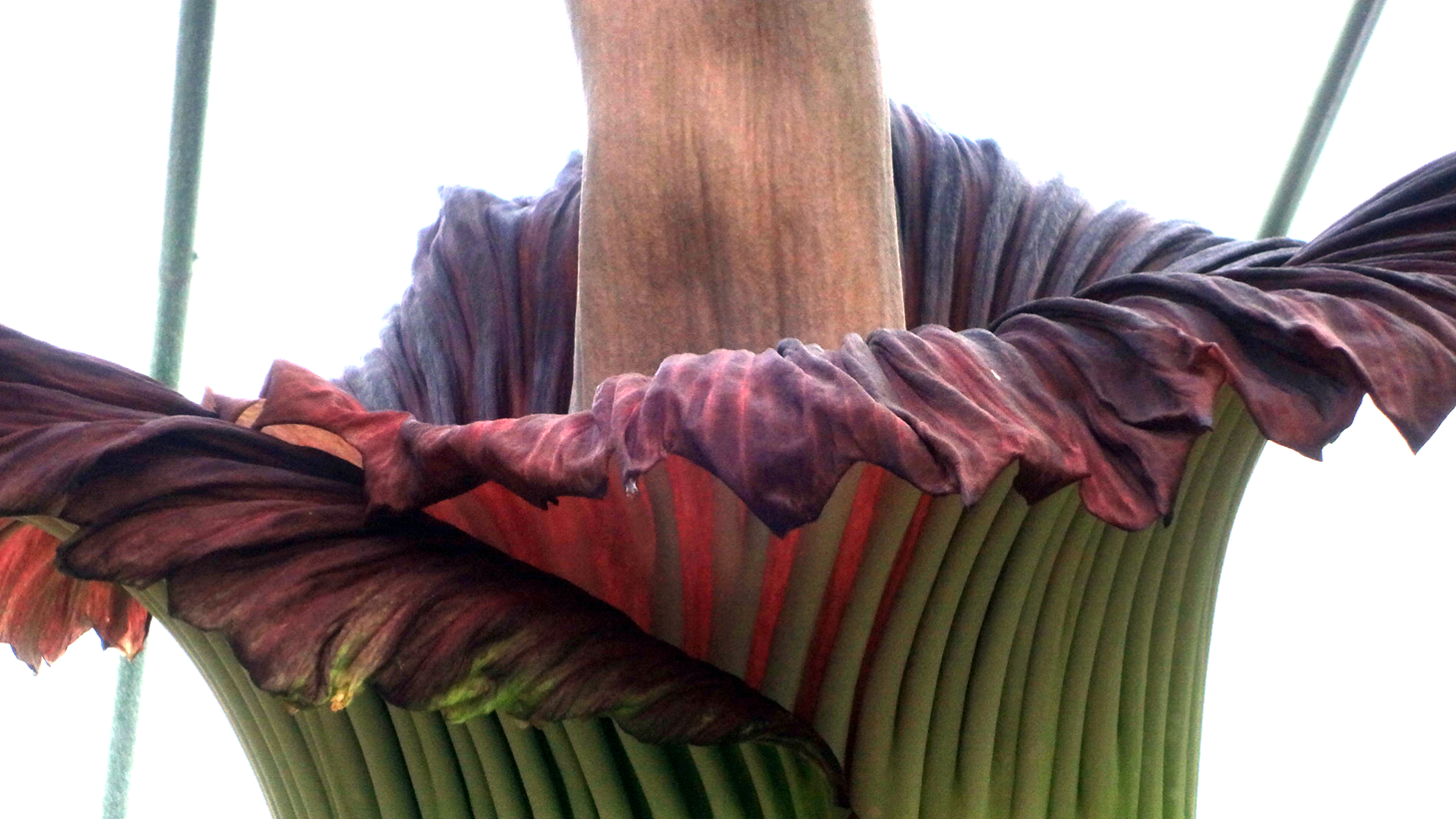It's hard to even think of this monster of a plant as a flower. More like a small tree but The Titan Arum is certainly a flower with a very strong perfume to go along with its size. The perfume smells similar to a rotting carcass and is sometimes referred to as the "corpse lily". It may not smell good but it sure is pretty. Here are some videos. More info below.
Rare footage
A little time laps
Here are the flower's seeds
Another time laps

Image taken by Stephen A. Wolfe via Flickr

Image taken by don_macauley via Flickr

Image taken by Hardo via Flickr

Image taken by Stephen A. Wolfe via Flickr
Scientific Name: Amorphophallus titanum
Phylum: Tracheophta
Class: Monocots/Equisetopsida/Liliopsida
Order: Alismatales/Arales
Family: Araceae
Genus: Amorphophallus
Key Characteristics:
- The Titan Arum was first discovered by Odoardo Beccari in Sumatra in 1878
- The corpse like smell given off by the flower is used to attract other insects (looking for carrion) for pollination
- The Arum even gives off heat (to the point of steaming) to make the perfume more attractive
- The plants outer leaves are called the spathe and the tubular structure in the middle is called the spadix
- The Titan Arum holds male and female flowers which can be found at the bottom of the spadix being protected by the spathe
- Once the spathe has unfolded away from the spadix the female flowers are ready to be pollinated
- The spadix then begins to give off its heat and perfume which attracts the insects. Once inside the smooth walls of the spathe the insects cannot leave and are trapped.
- Then the male flowers give off their pollen which attach to the trapped insects. Then the spathe begins to wither (takes 2 days or so) which allows the insects to escape and pollinate.
- Eventually the peddles from the spathe collapse and twist around the base of the spadix protecting the developing fruit. Once the fruit is ripe the peddles rot away exposing the bright orange fruit to birds and other animals to be eaten, and as a result dispersed.
Diet:
- Sun...
Fun Fact:
Sources:
http://www.untamedscience.com/biodiversity/plants/flowering-plants/monocots/alismatales/araceae/amorphophallus/titanum
http://www.arkive.org/titan-arum/amorphophallus-titanum/
http://florawww.eeb.uconn.edu/199500115.html
http://www.environmentalgraffiti.com/news-titan-arum-largest-and-rarest-tropical-flower-earth?image=5
http://www.kew.org/plants-fungi/Amorphophallus-titanum.htm
- The Greek translation of Amorphophallus titanum is giant (Titan)"without form" or "deformed" (Amorphos) penis (Phallos).
Sources:
http://www.untamedscience.com/biodiversity/plants/flowering-plants/monocots/alismatales/araceae/amorphophallus/titanum
http://www.arkive.org/titan-arum/amorphophallus-titanum/
http://florawww.eeb.uconn.edu/199500115.html
http://www.environmentalgraffiti.com/news-titan-arum-largest-and-rarest-tropical-flower-earth?image=5
http://www.kew.org/plants-fungi/Amorphophallus-titanum.htm

No comments:
Post a Comment